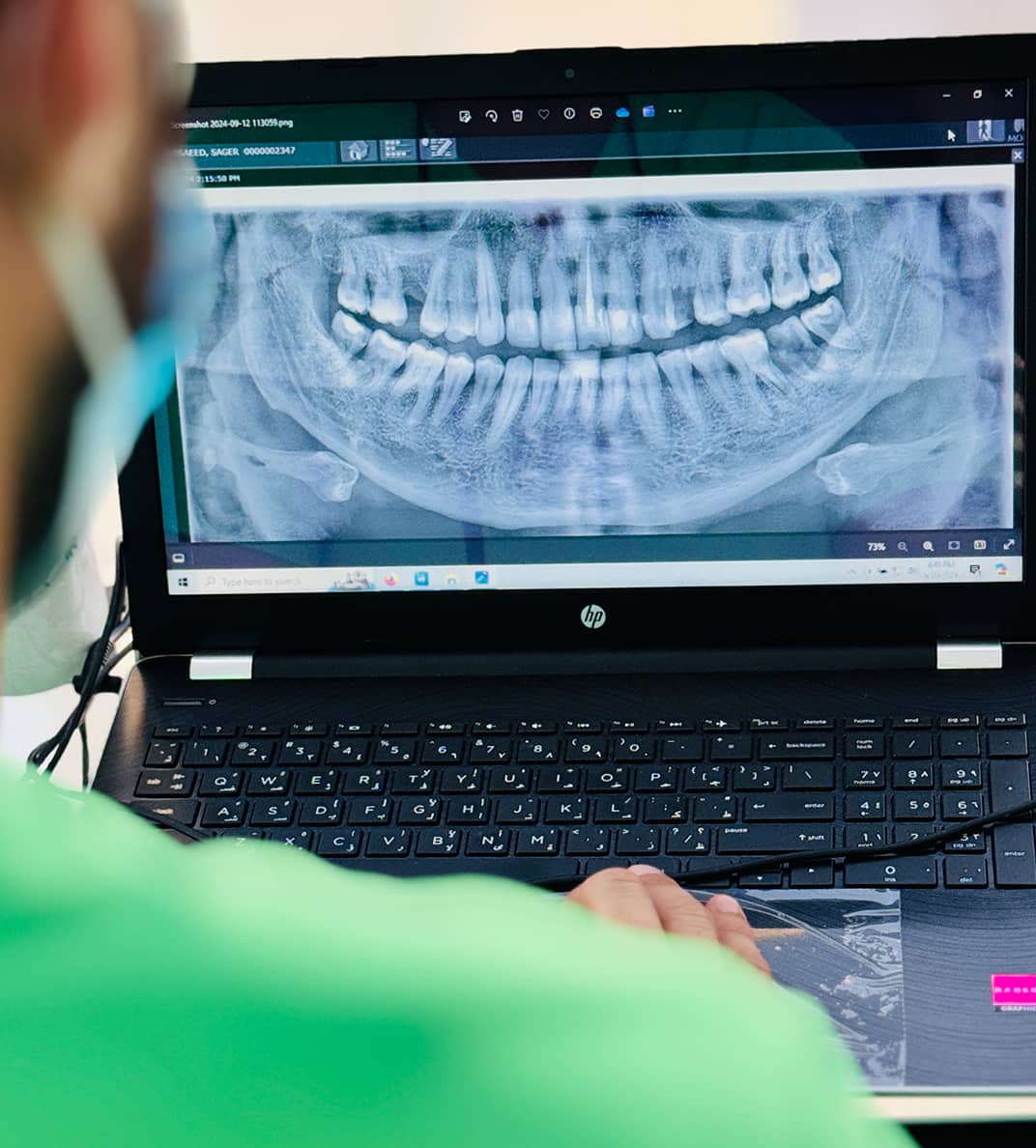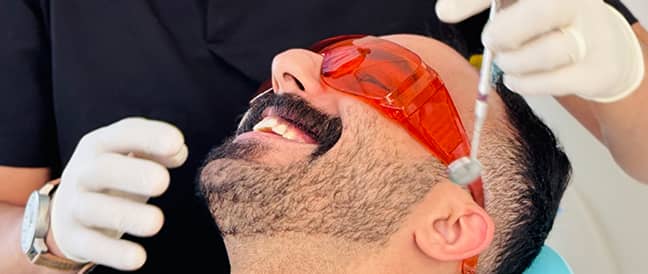Periodontics

Managing bleeding gums involves a combination of good oral hygiene practices and addressing any underlying issues. First, it is important to brush your teeth twice daily, preferably with a soft-bristled toothbrush. You should also floss daily. Additionally, using an antimicrobial mouthwash and avoiding smoking can help. If the bleeding persists despite these measures, consult your dentist during your regular check-ups. We are here to address gum disease and to assist you in monitoring any underlying health conditions that may be causing the bleeding.
Gingivitis is the early stage of gum disease. During this stage you may notice inflamed, red, swollen, and bleeding gums. Good oral hygiene at home can stop gingivitis and helps restore healthy gums.
On the other hand, periodontitis is a more severe and progressive form of gum disease. It results in damage to the soft tissue, potentially leading to tooth loosening or tooth loss. Timely treatment of periodontitis, coupled with consistent oral hygiene practices under the guidance of your dentist, can prevent further damage.
To reduce bleeding and alleviate pain, place an ice cube on the affected area for 10 minutes. For swelling, apply a cold compress or ice pack to the outside of the cheek. If the injury is severe, such as a loose tooth or noticeable damage to the soft tissue, please contact us to schedule an appointment as soon as possible.
Injuries inside the mouth generally heal more quickly than those on other parts of the body. Soft tissue wounds typically close on their own within a few days, often without the need for stitches. A significant factor contributing to the rapid healing of oral injuries is the abundant blood supply in the face and mouth, which facilitates recovery.

